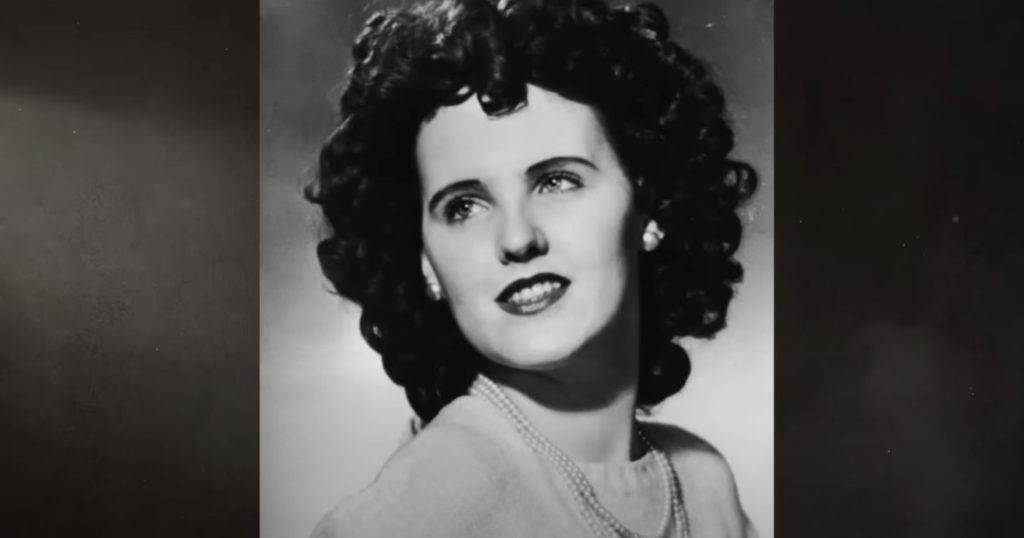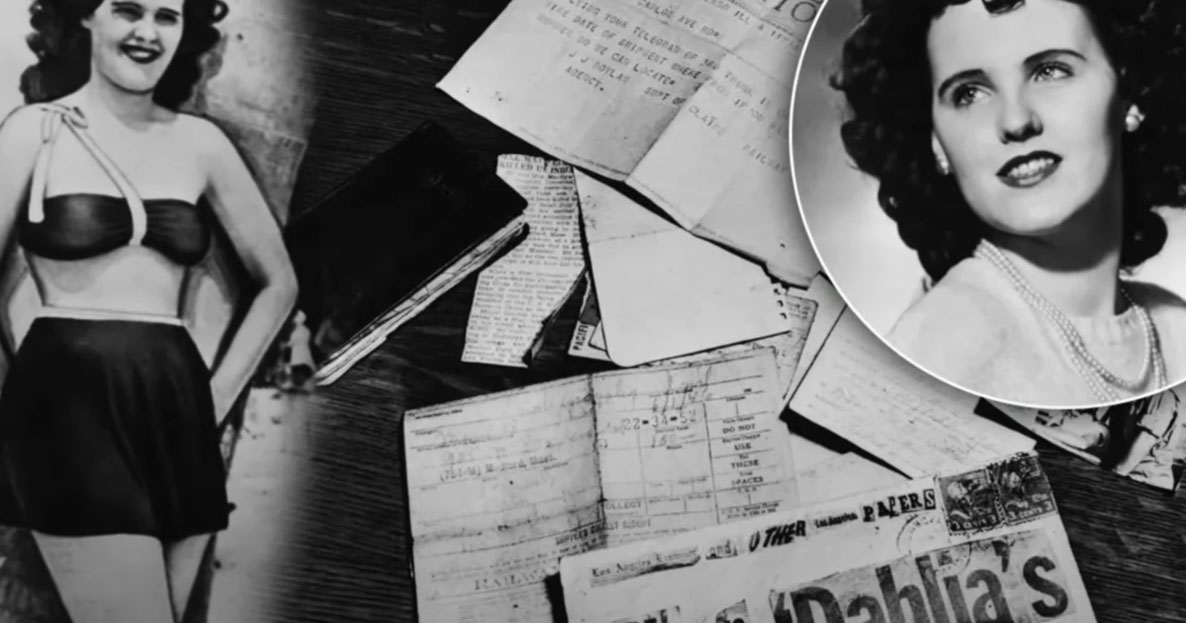Elizabeth Short, known posthumously as “The Black Dahlia”, remains one of the most enigmatic figures in American history. Her life and untimely death have sparked endless fascination, controversy, and speculation. Born in 1924, Elizabeth Short’s story is not just a tale of an aspiring actress in Hollywood; it is a narrative interwoven with mystery, tragedy, and a notoriously unsolved crime that has captivated the public and investigators for decades. The gruesomeness of her murder in 1947, coupled with the media frenzy that followed, cemented her story in the annals of true crime history. This introduction seeks to shed light on the life of Elizabeth Short before her transformation into the Black Dahlia, exploring her early years, aspirations, and the series of events that led her to Los Angeles, setting the stage for the tragic end that would make her a household name.
Elizabeth Short’s Early Life
Born on July 29, 1924, in Boston, Massachusetts, Elizabeth Short was raised in a family facing its share of hardships. Her father, who built miniature golf courses, vanished when she was young, leaving the family in financial distress. Elizabeth’s mother, left to fend for the family, worked as a bookkeeper to support her five daughters. Elizabeth’s childhood was further complicated by severe bronchitis and asthma, leading to a lung surgery at age 15. Following her doctor’s advice, she was sent to Miami during winters for three years, seeking a climate more conducive to her health.

Her early life was marked by a series of relocations and disruptions. After her father reappeared in her life, Elizabeth moved to Vallejo, California, to live with him at the age of 18. This reunion, however, was short-lived due to arguments, leading to her eventual move out. Her time in California was punctuated by various jobs and a brief stint in Santa Barbara, where she was arrested for underage drinking. This incident resulted in her being sent back to Massachusetts, although she would soon return to Florida, continuing a pattern of frequent moves and unstable living situations.
These early years painted a portrait of a young woman grappling with personal challenges and seeking stability. Her aspirations to break into the Hollywood scene were as much about escaping her troubled past as they were about achieving fame. This backdrop of Elizabeth Short’s early life sets the stage for her eventual move to Los Angeles, where she would seek to reinvent herself, tragically becoming famous not for her life, but for her death.
The Move to Hollywood
Elizabeth Short’s journey to Hollywood was fueled by her aspirations to become an actress. In July 1946, she relocated to Los Angeles, drawn by the allure of the film industry and the promise of fame that Hollywood represented. Short’s move to this epicenter of the entertainment world marked a significant turning point in her life. Her days in Los Angeles were a mix of seeking acting opportunities, working various jobs, including as a waitress, and socializing in the bustling post-war Hollywood scene. Despite her aspirations, there are no records of her securing any significant acting roles.
Her life in Hollywood was characterized by transient living situations and social connections. She often stayed in hotels or with acquaintances, and her social life was active, including frequenting popular nightspots and making numerous acquaintances. This period of her life was a stark contrast to her earlier years, filled with the glitz and glamour of Hollywood, yet also underscored by instability and unfulfilled dreams.
The Mystery of the Black Dahlia
The mystery surrounding Elizabeth Short’s death begins with her disappearance in early January 1947. The last confirmed sighting of Short was at the Biltmore Hotel in Los Angeles. From there, the details of her final days remain murky. On January 15, 1947, her mutilated body was discovered in a vacant lot in the Leimert Park neighborhood of Los Angeles, a gruesome scene that shocked and horrified the public.
The condition of her body, bisected at the waist and severely mutilated, suggested a level of brutality that was shocking even by the standards of the time. The case quickly gained notoriety, with newspapers dubbing her “The Black Dahlia,” a nickname that captured the public’s imagination and added a layer of mystique to the already sensational case.
The investigation into her murder was extensive, involving numerous police officers and detectives. Despite the extensive efforts, the case was marred by a lack of solid leads, false confessions, and a media frenzy that often complicated the investigation. Over the years, the Black Dahlia murder has become one of the most famous unsolved cases in American history, inspiring countless books, films, and theories.
The mystery of the Black Dahlia remains unsolved to this day, with speculation and theories continuing to abound. Some theories suggest connections to other crimes of the era, while others propose various suspects, ranging from known criminals to figures in Hollywood. However, no conclusive evidence has ever been presented that definitively solves the case of Elizabeth Short’s murder.
The Legacy of the Black Dahlia
The Black Dahlia murder, while remaining an unsolved mystery, has left a lasting legacy that extends far beyond the confines of the investigation itself. The case’s enduring impact can be observed in several key aspects:
- Cultural Phenomenon: The Black Dahlia murder transformed Elizabeth Short from a relatively unknown young woman into an iconic figure in American culture. Her story has inspired numerous books, movies, documentaries, and television series, ensuring that her name and the mystery surrounding her death continue to captivate audiences.
- Influence on Crime Fiction: The case of the Black Dahlia has had a profound influence on the genre of crime fiction. It has inspired countless crime novels and detective stories, often serving as a reference point for writers and filmmakers exploring the dark and mysterious aspects of crime.
- Impact on True Crime: The Black Dahlia case is frequently discussed in the context of true crime, attracting amateur sleuths, researchers, and enthusiasts who continue to dissect and analyze the available evidence and theories. The case remains a subject of fascination for those intrigued by unsolved mysteries.
- Influence on Investigations: The Black Dahlia murder has also had an impact on the field of criminal investigations. It serves as a historical example of a high-profile, complex case that remained unsolved despite extensive efforts. Lessons learned from the investigation continue to inform modern investigative techniques and approaches.
Conclusion
The Black Dahlia murder represents a compelling and tragic chapter in the annals of American crime. Elizabeth Short’s life and death have become symbols of mystery, intrigue, and the quest for justice. While her aspirations to become an actress in Hollywood went unfulfilled, her story took on a life of its own, transcending time and place.
Despite the passage of over seven decades, the Black Dahlia case remains open, a testament to the enduring nature of unsolved mysteries. The various suspects and theories continue to fuel speculation, ensuring that the enigma of Elizabeth Short’s murder lives on.
In conclusion, the legacy of the Black Dahlia serves as a reminder of the power of true crime stories to capture the public’s imagination and endure through generations. As long as the mystery remains unsolved, the Black Dahlia will continue to haunt the collective consciousness, a symbol of the unresolved and the unknown in the world of crime.









Leave a Reply